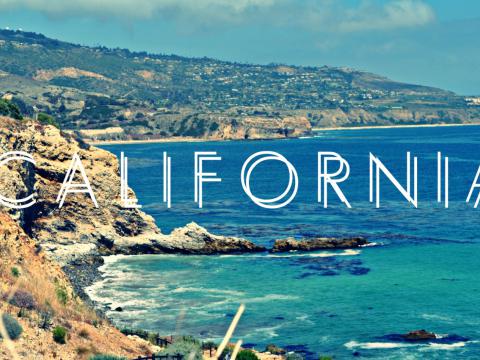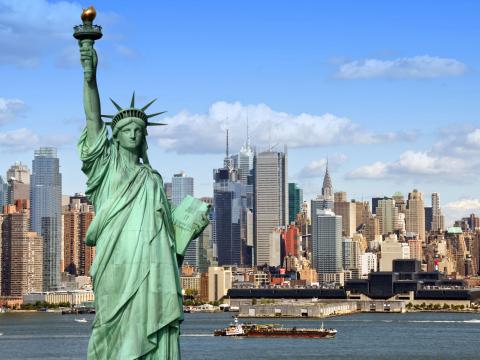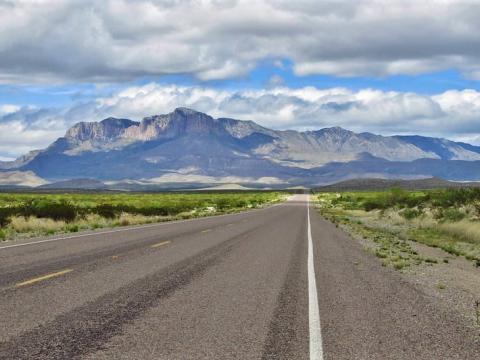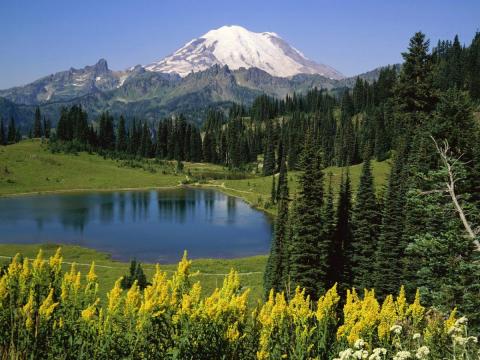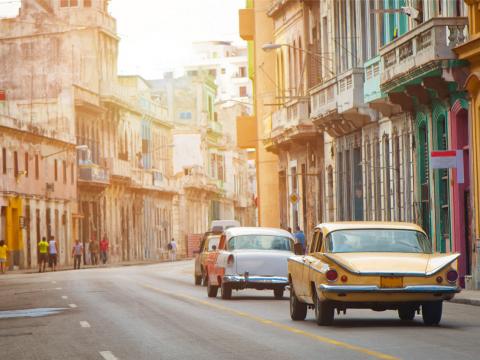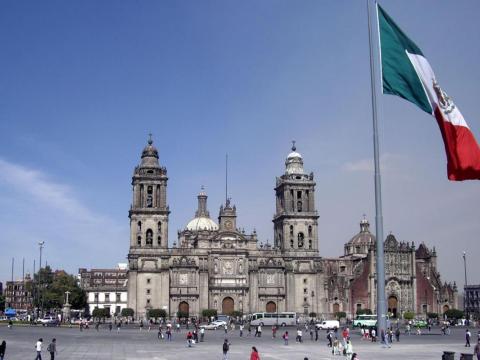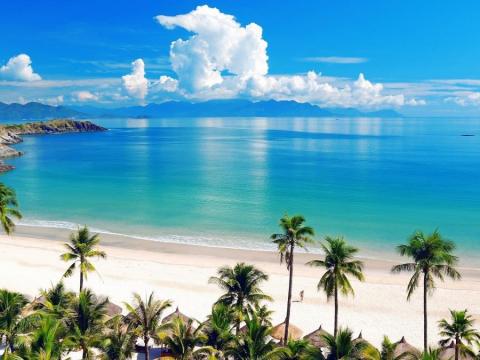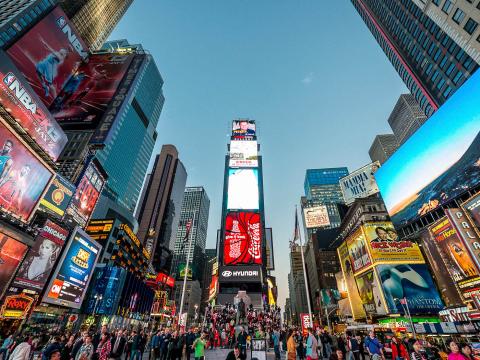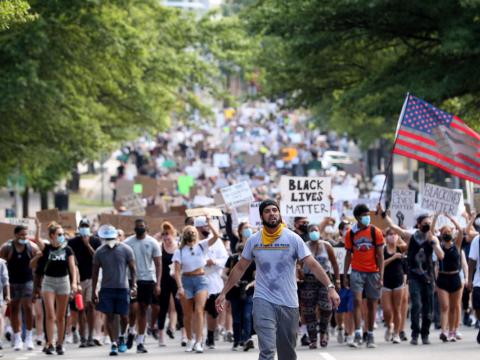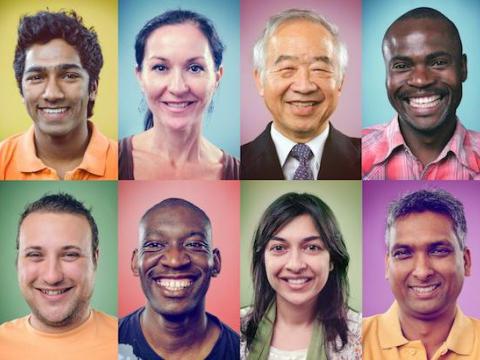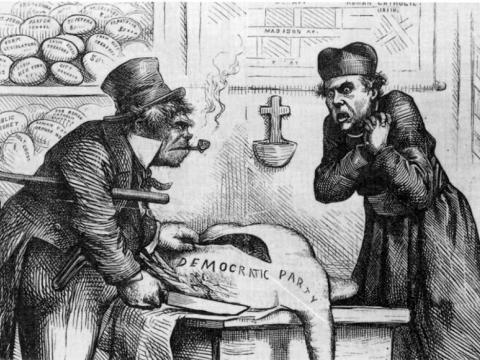United States in a Nutshell
The United States of America is the most well-known and looked-to country on the planet. For decades it has stood at the pinnacle of achievement in both technological and economical standards, and has garnished a reputation for being the “land of the free” and a place where anyone can come to pursue the “American dream”. Boasting the world’s largest population after China and India, the country is a vast, sprawling country of extremes, from the wide open plains of the Midwest, to the coastal regions along the eastern, western, and southern coasts, to the Rocky Mountains and beyond. The cities are some of the grandest in the world, and the people are some of the most culturally diverse that you will ever find in your travels.
Experiencing the United States in its entirety would be impossible to do in just one lifetime. Even native residents could not possibly explore every single nook and cranny available for discovery, but that doesn’t mean you shouldn’t try. Explore natural wonders like the Grand Canyon or the mountains of Hawaii, or head up into Yellowstone National Park or Alaska for some of the most pristinely untouched wilderness on the planet. Explore the urban canyons of sprawling metropolises such as New York City, Chicago, or Los Angeles. Visit the ancient cliff dwellings at Mesa Verde, or explore the mystical beauty of the Smoky Mountains. No matter what pursuit you follow, adventure and excitement awaits.
Cultural centers exist all over the United States. Places like New Orleans, a haven of Creole, jazz, and strangely French traditions that have been adapted over time, or the various Indian reservations, preserving a tragically reduced way of life that is but a pale shadow of its former glory. Visit the famous wharfs of San Francisco or the world-famous casinos in Las Vegas. Pick a spot and simply go, because you won’t be able to cram it all into just one trip.
History
When the US was founded, it was primarily an English colony. Because it broke away from England, it sought to do away with a lot of class restrictions of the old society, so, official documents were written and enshrined to create a country based on the principle that ‘all men were created equal‘. The other principle as important in outlining American social philosophy was the "self-evidence" that people born or naturalized in the United States were, by virtue of that, US citizens.
In America, these two principles should have been enough to create a veritable melting pot where people would harmoniously and naturally mix with one another and thus create a great American nationality. The same way as it happened in Brazil. However, there were also opposing principles and forces (colonial elite) in the US culture of those times which did not allow the One Nation Under God to truly develop, and, instead, lead to several parallel ethno-cultures arising in its place.
The birth of the "white" identity
Most Europeans are not aware of the fact that they are “white”, and do not think of themselves as ‘white‘. Germans think of themselves as Germans, and Poles think of themselves as Poles. The British were English, Scottish or Welsh, not "white". The term 'white' originated during the colonial times, when various Western conquerors came upon the shores of continents where people had a darker pigmentation than these colonists did. Still, in many Spanish colonies, the conquistadors thought of themselves more as ‘Spaniards’ than ‘whites‘. It was in the English colonies that the 'white' self-nomination became the strongest.
Some of the Founding Fathers, after creating a white ’nationality’, went as far as declaring that only the English were “white”, and even people like Germans and Swedes were not. I can’t imagine why, though.
This new white "ethnos" took a deep root in the American psyche and became a cornerstone in creating other identities which eventually split America into several new uniquely American "ethnic groups" the likes of which seem to exist as serious ethnic identities in the US and some other British colonies only: the Blacks, the Hispanics, the Asians, etc.
After the Native Americans had been pushed out and the Founding Fathers had a “white”, mostly ethnically “English” nation in America, they, very contradictorily to their own plans, did not keep it that way. I guess, becoming wealthy was more important. So, they went ahead and brought slaves from Africa. Why? Well, you see, they faced a “labor shortage”, and importing the English was probably too expensive. Slaves worked for free. To them, it seems, growing rich by slave labor while bringing thousands upon thousands of captive Africans into the country was more imperative than preserving a newly found “white nation”. They did not think about what these slaves and their descendants would become in the future, where they would live, how they would change the character of the “white country” that they had been trying to create. In other words, they had two conflicting desires- one for ‘racial purity’ and one for profit at another man’s expense, whoever he may be.
Black people from Africa did not think of themselves as Black, either, until they came to America. They thought of themselves by the name of tribes that they belonged to. However, these African identities were completely obliterated and instead morphed into a new “Black” identity by the virtue of different tribes being dumped together in the New World. They were now called “Black” by the settlers who were calling themselves “White”.
Thus, there were now two nations in the US, one Black and one White. When the slaves were finally freed, the two legal principles mentioned before eventually and, after along struggle ‘kicked in’ in their favor and helped ‘adjust their status‘- the first one again was that ‘all men were created equal’, and the second one was that almost sacred conviction of every American that anyone born in the United States was a US citizen. Following these events, albeit not immediately, a “Black”, and later”African-American” identity was born.
English snobberies
The first settlers brought a lot of the Old World, uniquely English snobberies with them. The main one was that anyone who was not English and /or who did not act, speak or look English was somehow inferior. Being an American in those times meant to be ‘English’, or, at least, talk and behave like one and have an English name to boot.
OK, it was their country now and they made the rules. This I can go along with. But they again do not practice what they preach and they go ahead and start bringing in boatloads of new immigrants from Europe because they are facing a new labor shortage and need someone to man factories and coal mines. They took advantage of turmoil and hunger on the Old Continent and brought more new, non-English people in.
When the Irish and, later, the Germans, the Italians and the East European Jews arrived, they came up against these merciless English snobberies. Instead of being embraced into a “melting pot”, many were kept at a distance by the people who had come before them and were not accepted as true Americans for a long time. If you had a non-English name, a foreign accent or, God forbid, spoke a foreign language, and did not behave as the original British settlers, you faced ostracism. You were kept at an arm’s length and treated as an outsider. In addition to that, even after you had children in the US, again, the original settlers would still call them Italians, Irish, Jewish or Polish and continued to discriminate against them for some generations to come.
The reaction of the new native-born Americans was to assert pride in their origin, and hyphenate themselves. “I am proud to be an Italian- American! “, “I am proud to be an Irish-American! “ Such hyphenated pride was often simply a backlash to the snootiness of the first English settlers. The new people were Americans because they were born in the US, but for since because they were not British in origin, they would still be considered not quite American for a long time to come. Hence, they would now form a previously unknown “dual” identity the likes of which did not exist in the Old World, where either you were German or you were not, or you were an Irishman or you were not. It was simple there. It became complicated in the US. Hyphenization seemed to solve the problem somewhat.
Many of such groups became encysted in ethnic neighborhoods and special sections of the cities partly because they needed the support of like souls in the new land, and, partly, because those who had come before them discriminated against them
None of these American ethno- identifying terms helped in creating a single American identity, but rather, further paved the way to what we now know as Multi-Culturalism.
Many Latin Americans of various immigrant origins cannot understand the US people’s tendency to hyphenate and to be proud of being, say, an Italian -(American), all while not having Italian citizenship, never having been to Italy and not speaking any Italian. Why can’t a person be just an American? they muse. They are not aware of how in the US, the English exclusiveness reverberating through two centuries keeps many people from becoming members of society with only one word to describe them as one would be in so many countries south of the US border.
With all the snobberies and the “white identity” still in place, the US government surprisingly goes ahead and purchases Louisiana with its very mixed Creole population, then annexes the northern part of Mexico with its mostly mixed “mestizo” inhabitants, and, later, brings in Hawaii, the Philippines and Puerto Rico under its fold with more “non-white” people now joining the country in one way or another. Add to that the Chinese and Japanese laborers that were brought in to build railroads, and the appropriation of the territories of Guam, Samoa and the Marianas, and the United States again adds to its population a veritable potpourri of new cultures and identities.
How are you going to sort it out? The original principles of the Constitution would again be applied: all people born or naturalized in the US are US citizens and those born or naturalized in US possessions are US nationals. However, because of the unnatural “white nationality “ which now encompassed all the English descendants as well as other Europeans who by now have been “Americanized” still in place with all its superciliousness, there is still there the continued stratification and discrimination across all strata of society. The groups who cannot join “the white nation” form their own divisions based on how they look and how they see each other. Chinese and Japanese become Asian- Americans, Puerto Ricans and Mexicans become Hispanic Americans while Italians and Jews join the “White” or “Caucasian” group.
(By the way, outside of the English language, the word “Caucasian” means people from the Caucasus mountains- Armenians, Georgians, Azeris. However, in the US, it means people with “light skin” having origins in Europe, Middle East and N. Africa now. So the Berbers and Afghans have now joined the English. Kind of inconsistent if you ask me. I often wonder what anthropologists these classifiers have contacted before they coined all these arbitrary terms.)
As a result, all the above groups with the remnants of the Native Americans solidify themselves into a five-race system that is America today.
If you come from another country and move to the United States, you will soon feel the pressure to join one of these ‘tribes’ and abandon your original identity as a Thai, a Peruvian or a German. No, you do not melt into America. You melt into a White America, a Black America, an Asian or a Hispanic America. There is very little that you can do to fight against this ludicrous system as you are now outnumbered by people who will assign you to one of these groups whether you want it or not. This is how these things developed over two centuries and this is now the official policy of the government, schools and workplace. All thanks mainly to the strange New World phenomenon of ‘whiteness’ and the English snobberies which have been rolling down the hill and ricocheting against everybody in this country for two centuries resulting in splitting of the US into such five slices.
If you are new to the US, and you want to just make friends with all the people there, you will inevitably clash with this Quinto-Tribal structure sooner or later. Politicians and other elements exploit this “Five-Nations in One” divisions to get votes, pitch one group of people against another. The reaction to the original rejection by the English of whoever was not like them two hundred years ago keeps boiling in the veins of the American population up until today.
This way the divisions among many ethnicities in America based on the original British insular snobbishness, mistrust, jealousy, selfish profiteering, lack of respect for the fellow man, the puttering Melting Pot that melts unevenly and with great interruptions, and the resulting, long-lasting, uneasy Salad Bowl has been given a fancy name of Multi-Culturalism to camouflage its ugliness. The school systems and the government’s unscientific and artificial ethnic classifications further divide people by giving them unnatural identities that have no equivalent in the countries where these people had originally come from.
The birth of racism in the United States
Racism in America has in roots in British snobbery. However, it was more economic than "racial". The first settlers brought a lot of the Old World, uniquely English snobberies with them. The main one was that anyone who was not English and /or who did not act, speak or look English was somehow inferior. However, the colonial elite were responsible for racism becoming a cornerstone in the American psyche. They used a new white identity to separate dangerous free "whites" from dangerous black slaves by a screen of "racial" contempt.
Introduction
Black slaves worked on plantations in small numbers throughout the 1600s. But until the end of the 1600s, it cost planters more to buy slaves than to buy white servants. Blacks lived in the colonies in a variety of statuses—some were free, some were slaves, some were servants. The law in Virginia didn’t establish the condition of lifetime, perpetual slavery or even recognize African servants as a group different from white servants until 1661. Blacks could serve on juries, own property, and exercise other rights. Northampton County, Virginia, recognized interracial marriages and, in one case, assigned a free Black couple to act as foster parents for an abandoned white child. There were even a few examples of Black freemen who owned white servants. Free Blacks in North Carolina had voting rights. In the 1600s, the Chesapeake society of eastern Virginia had a multiracial character.
There is persuasive evidence dating from the 1620s through the 1680s that there were those of European descent in the Chesapeake who were prepared to identify and cooperate with people of African descent. These affinities were forged in the world of plantation work. On many plantations Europeans and West Africans labored side by side in the tobacco fields, performing exactly the same types and amounts of work; they lived and ate together in shared housing; they socialized together; and sometimes they slept together. White servants’ ditty of the time said, “We and the Negroes both alike did fare/Of work and food we had equal share.”
The planters’ economic calculations played a part in the colonies’ decision to move towards full-scale slave labor. By the end of the 17th century, the price of white indentured servants outstripped the price of African slaves. A planter could buy an African slave for life for the same price that he could purchase a white servant for ten years. As Eric Williams explained:
Here, then, is the origin of Negro slavery. The reason was economic, not racial; it had to do not with the color of the laborer, but the cheapness of the labor. [The planter] would have gone to the moon, if necessary, for labor. Africa was nearer than the moon, nearer too than the more populous countries of India and China. But their turn would soon come.
The birth of racism
Free white workers were better off than slaves or servants, but they still resented unfair treatment by the wealthier classes. With the problem of Indian hostility, and the danger of slave revolts, the colonial elite had to consider the class anger of poor whites-servants, tenants, the city poor, the propertyless, etc. As the colonies passed their hundredth year and went into the middle of the 1700s, as the gap between rich and poor widened, as violence and the threat of violence increased, the problem of control became more serious. It was the potential combination of poor whites and blacks that caused the most fear among the wealthy white planters. The answer to the problem, obvious if unspoken and only gradually recognized, was racism, to separate dangerous free whites from dangerous black slaves by a screen of racial contempt.
They forced landless whites to move westward to the frontier, there to encounter the Indians and to be a buffer for the seaboard rich against Indian troubles. Better to make war on the Indian, gain the support of the white, divert possible class conflict by turning poor whites against Indians for the security of the elite.
There was still another control which became handy as the colonies grew, and which had crucial consequences for the continued rule of the elite throughout American history. Along with the very rich and the very poor, there developed a white middle class of small planters, independent farmers, city artisans, who, given small rewards for joining forces with merchants and planters, would be a solid buffer against black slaves, frontier Indians, and very poor whites.
The growing cities generated more skilled workers, and the governments cultivated the support of white mechanics by protecting them from the competition of both slaves and free blacks. Middle-class Americans might be invited to join a new elite by attacks against the corruption of the established rich. The New Yorker Cadwallader Golden, in his Address to the Freeholders in 1747, attacked the wealthy as tax dodgers unconcerned with the welfare of others (although he himself was wealthy) and spoke for the honesty and dependability of "the midling rank of mankind" in whom citizens could best trust "our liberty & Property." This was to become a critically important rhetorical device for the rule of the few, who would speak to the many of "our" liberty, "our" property, "our" country.
Similarly, in Boston, the rich James Otis could appeal to the Boston middle class by attacking the Tory Thomas Hutchinson. James Henretta has shown that while it was the rich who ruled Boston, there were political jobs available for the moderately well-off, as "cullers of staves," "measurer of Coal Baskets," "Fence Viewer." Aubrey Land found in Maryland a class of small planters who were not "the beneficiary" of the planting society as the rich were, but who had the distinction of being called planters, and who were "respectable citizens with community obligations to act as overseers of roads, appraisers of estates and similar duties." It helped the alliance to accept the middle class socially in "a round of activities that included local politics ... dances, horseracing, and cockfights, occasionally punctuated with drinking brawls..."
As Richard Hofstadter said: "It was ... a middle-class society governed for the most part by its upper classes." Those upper classes, to rule, needed to make concessions to the middle class, without damage to their own wealth or power, at the expense of slaves, Indians, and poor whites. This bought loyalty. And to bind that loyalty with something more powerful even than material advantage, the ruling group found, in the 1760s and 1770s, a wonderfully useful device. That device was the language of liberty and equality, which could unite just enough whites to fight a Revolution against England, without ending either slavery or inequality.
Profit is almost always above racial or national solidarity.
For a long time now, an average white American employer, a “John Smith” has discovered that hiring a Jose Rodriguez from Mexico costs less than hiring another John Smith from the US. Jose Rodriguez will work for less because his family is often in Mexico, and Mexico is cheaper than the US. $50 a day is a fortune in Mexico. Jose Rodriguez is working hard and is very happy with his job. But the other John Smith, the employee, is complaining that he is not making enough. The Smiths live in the US; not Mexico. School tuition is high, housing is expensive. He wants more money. ‘To hell with a fellow John Smith,” says the Gringo employer-“I am hiring Jose Rodriguez who is here illegally. I’ll save money in the process and make a fatter profit.”
In the US, when it comes to money, profit by any means possible often takes precedence over race, nationality, ethnic origin, citizenship or patriotism. Americans will usually hire anybody who costs less. The “white cause” is now opium for the poor, unemployed, and oppressed rural whites. But the economic reality is still this: an illegal Mexican plumber will come to your house and repair your faucet for $30. An American plumber (often white, but, sometimes, black, Hispanic or Asian) will charge you $200 for the same job.
What will a white American rather have- a white mechanic who presents him with an $800 bill for simple repairs on his vehicle, or an illegal Mexican mechanic who will repair his car for $300 or less? The answer is obvious.
Last modified on 04/30/2021 - 06:30
States
Currently there are no trip reports about United States.
Currently there are no videos of United States.


